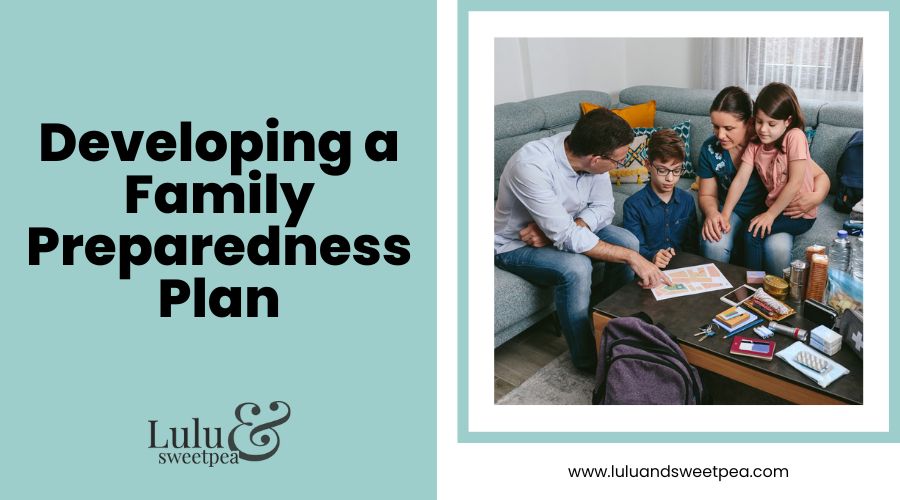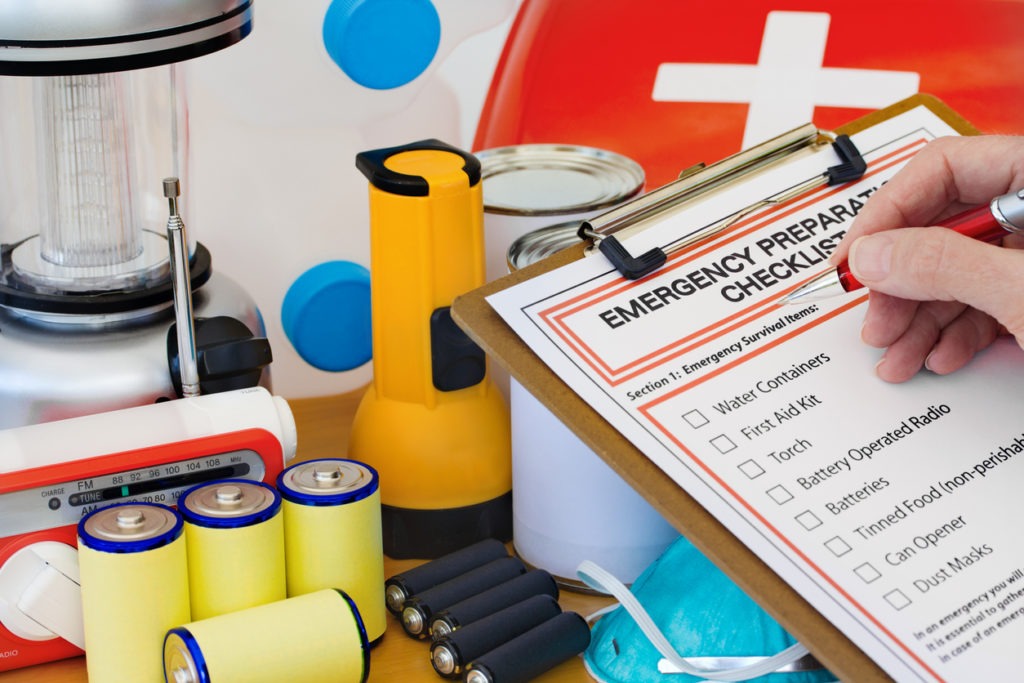In the face of any disaster, what matters most is your and your family’s safety. Having a plan set before disasters will help ensure that you can focus on what’s most essential while minimizing the financial impact.
And when disasters strike, they won’t be the same, so it’s essential to consider a lot of things, like the layout of your house, the ages of the people in your home, different communication channels, etc. It’s vital to have a plan and ensure that every family member knows what to do.
Preparing for a Disaster
There are a variety of possible disasters that you may need to prepare for. The first thing to do is determine which may affect your home. Fires and robberies could happen anywhere, but natural disasters such as earthquakes, tornadoes, hurricanes, and flooding tend to be more regional. Know what emergencies are most likely to occur in your area, and plan for them.
A disaster can strike any family with little to no notice. It can cause a household to evacuate immediately or confine people to their homes. Basic services like electricity, water, gas, and phones may be cut off for extended periods. Setting up a family disaster plan will help any family prepare for these types of adverse situations and mitigate the devastating effects a disaster might have.
In our mainstream society, interest in preparing for a disaster usually invites ridicule. You may be called crazy, ridiculous, or paranoid, but it’s better to be safe than sorry.
Things to Do to Make a Disaster Preparedness Plan
Know what disasters are most likely to happen in your home and in your area
To plan for disaster, you must list the disasters and emergencies that might happen. First, look through and around your home for potential risks, like blocked exits, old appliances, heavy shelves, and leaning trees. Identifying these risks may help you keep an eye out for warning signs of danger and avoid a bigger disaster.
Then, know what emergencies are most likely to happen in your area. This includes weather, like floods, tornadoes, hurricanes, volcanic eruptions, or other man-made disasters like a power station or a chemical plant. Risks may vary depending on the place you live in. Then, set up a plan based on the potential disaster.
Stock up on emergency supplies
If you are in an area where natural disasters such as tornadoes or hurricanes happen regularly, and even if you do not, since you can never be sure when a catastrophe may hit, there are some things to make sure you have on hand, preferably three days’ worth at the very least.
- Water – This is one of the most important things since it’s a basic human need. The minimum is one gallon per person per day.
- Food – Store food supplies that keep well but are also easy to open and eat with little to no preparation. If you have an alternate cooking method, such as a gas stove or a fire pit in the yard, you may still be able to heat up or cook items, but plan in advance. Remember that canned goods may require a can opener, so include one with the supplies.
- Light – In a case of a power outage, you need lights. Flashlights with extra batteries are the best option, but you can also store up candles with matches or lighters. Some emergency lights also have multi-functional features, like a radio or a fan. These are nice to have in case of emergency.
- Blankets and sleeping bags – You will need these in case of disaster strikes in cooler months.
- First aid kit – This is always a key part of a disaster kit. If you have prescription medications, keeping a few days’ worth handy is also a good idea.
- Battery-powered radio – It will help you keep up with what is happening when phone and cable lines are down.
- Cash – If it is a major disaster, there is a chance that debit and credit card readers will be offline and unavailable, so you need some spares to keep with you so you can buy supplies.
- Clothing and toiletries– These can be kept packed in backpacks or suitcases in case it is necessary to leave in a hurry.
- Infant, small children, or pets’ needs – If you have babies, little kids, and pets with you, make sure also to pack some of the special things they need.
- Entertainment – Toys, books, a couple of card games – it is not necessary to have them, but it can offer a fun distraction and temporary relief during a disaster.
Secure the house
Once you get a disaster warning from the government or from the news, you have to ensure that your home and property would get the least damage, as much as possible.
For example, if an imminent flood or hurricane is threatening your area, you need to do this. First, you need to put your outdoor property inside the garage, like garden equipment, trash cans, and lawn chairs, to keep them from flying or floating around, damaging your neighbors’ properties. Second, essential items such as personal documents, tax records, insurance policies, and family photos must be moved to higher locations or outside the house. The electricity at the main fuse box should be turned off, and the water must also be turned off at the main valve.
Set up an emergency communication plan
Make sure emergency numbers are posted anywhere in the house, then ensure that everyone has these numbers on their phone. Make sure that everyone knows how to reach family, friends, and emergency contacts like 911, the fire department, and the hospital in case of an emergency. Teach children when it is appropriate to call emergency numbers and when they should not. Assign a designated contact person to share vital information. If you have kids, identify who will serve as a backup contact if you’re unreachable.
Consider having a designated contact who can help notify the rest of your list so that you only have to make one call.
Set areas to meet up and where to go
With this, it will be easier to know if the whole family is safe. Start with one inside your house – a central location is best. Somewhere that is safe in the case of a tornado, or bad storm is a good idea. This means no windows near the middle of the house and without windows. If your house is large, an alternative spot is a good idea in case the first one is inaccessible or compromised.
Set an outdoor meetup location in case of fire or any disaster wherein you need to leave. Have an alternate in case it is needed. In case of severe weather, think about where you need to go for safety. That safe place may vary depending on the situation, like a flood, tornado, or fire.
Set up an escape plan diagram, like the ones in hospitals and schools. Draw the house’s floor plan, mark the location where the plan is posted, and mark the best route out in one color, with alternate routes in other colors. Discuss routes from different locations in the house with the family, making sure the children understand.
Familiarize the family with safety equipment
Explain the different safety equipment and tools you have in your homework so that everyone knows. Familiarize everyone with the sound of smoke alarms and carbon monoxide alarms by trying to set them off as a teaching session. Explain how fire extinguishers work.
Prepare for a disaster in a car
When disaster strikes while you’re on the road in a car, some steps must be taken. If an explosion destabilizes your vehicle, you must pull over safely, set the emergency brake, and ask for help. If a disaster, like an earthquake or flood, affects the stability of the road, you must avoid bridges, overpasses, road signs, electrical lines, and other related objects.
If you see a tornado approaching nearby, you must get out of a car and seek shelter. But if there’s no shelter available, lie down in a low area and cover the back of your head with your arms. It’s always advisable to store extra clothes in the car, especially during winter months. You can also store warm clothes, a blanket, a small shovel, and some ice or sand in the trunk if you’re stuck in the snow and stranded on the road.
Prepare for a disaster at school or work
Schools and work areas typically have evacuation plans in case of fire, earthquakes, and other types of disasters that are most likely to happen in your area. Make sure to participate in the drills so you will know what to do. If you work in a high-rise building, make sure you carefully understand the emergency plans, including exit locations.
Develop skills
No matter how good your plan is or how complete your stocks are, if you have yet to cultivate the skills needed for using these items, a disaster that turns into a survival situation may be the end of you. Learn to start a fire in several different ways, with various means and methods. Learn to grow food. Learn to harvest and purify water. Learn to put up your tent and take it down. Learn to dig a deep hole for toilet purposes. Learn first aid and CPR. Learn all you can, so you will be ready for whatever comes.
Practice, modify, and maintain the disaster preparedness plan
Make the whole family practice the plan every six months, including evacuation drills. To practice, test your emergency communications plan, assemble at meeting locations, and practice evacuation routes. If there are any necessary changes and improvements, they must be noted and practiced.
Your stored water, food, and medical supplies must also be rotated at least once a year. Make sure anything you pack has an expiration date dated at least two years or more to make sure it’s still usable and edible once you really need to use them.

